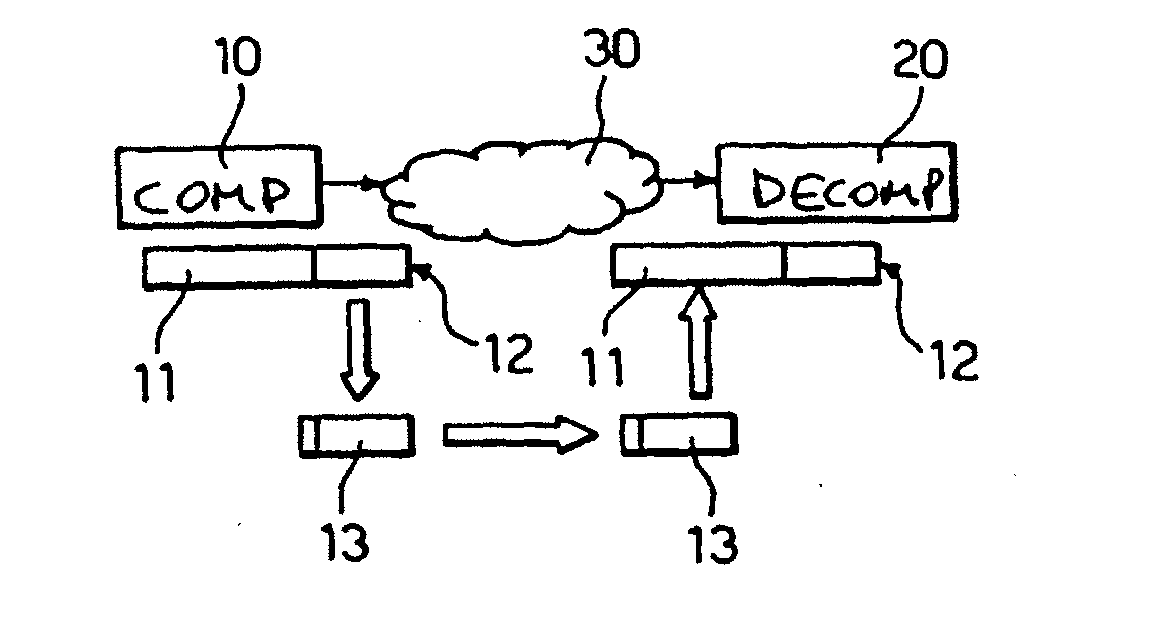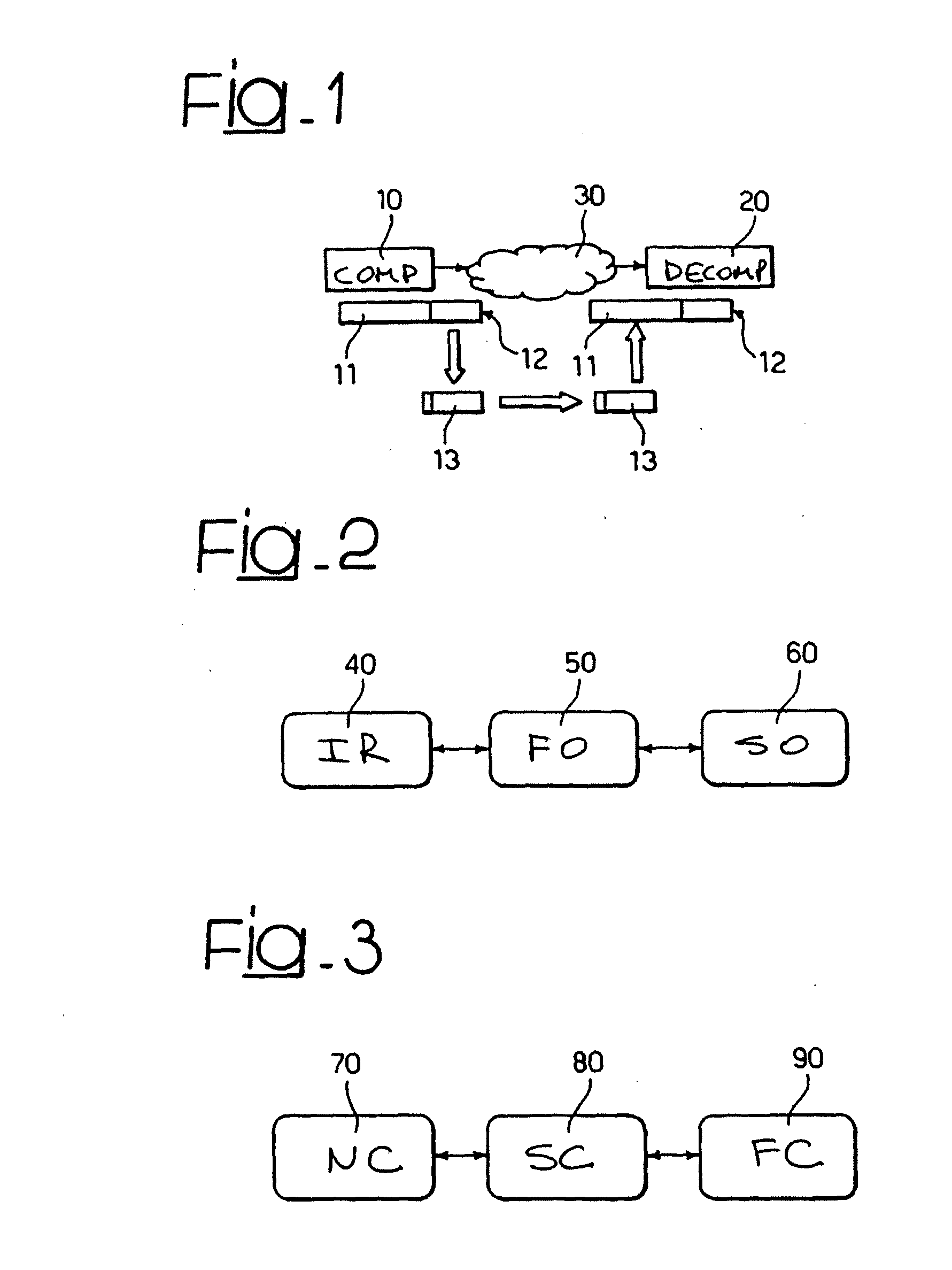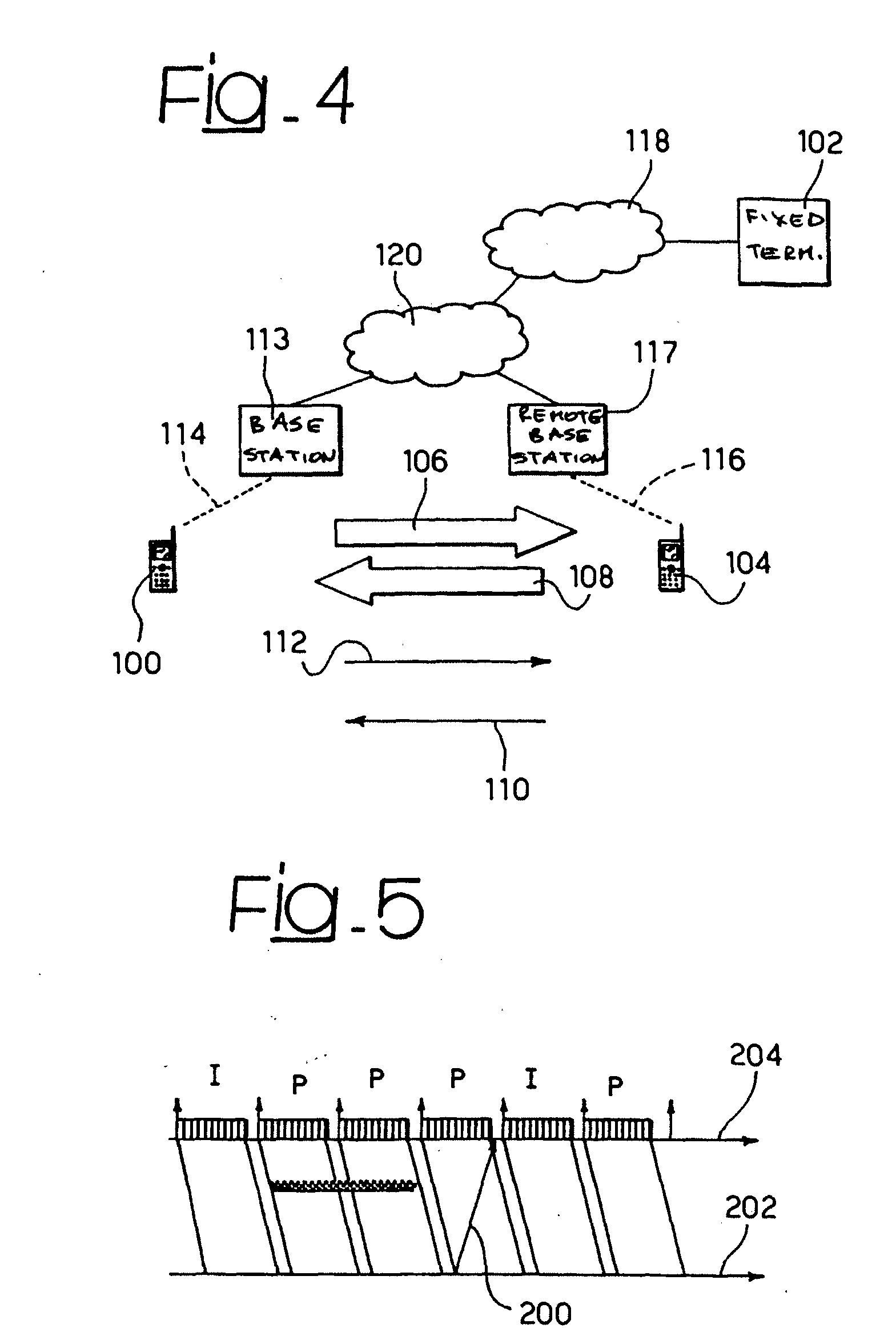Method and system for communicating video data in a packet-switched network, related network and computer program product therefor
a video data and packet-switching technology, applied in the field of communication systems, can solve the problems of video frame dropping, limited bandwidth availability, and inflexible solution
- Summary
- Abstract
- Description
- Claims
- Application Information
AI Technical Summary
Benefits of technology
Problems solved by technology
Method used
Image
Examples
Embodiment Construction
[0151]The goal of the present arrangement is the optimization of an IP-based video-call application between two terminals, in which at least one of them is a mobile one.
[0152]A system architecture is depicted in FIG. 4 for further reference, where a mobile terminal 100, corresponding to the User Equipment cited in the standard, is shown. Such a mobile terminal 100 communicates through a local link 114 with a base station 113, that in its turn is communication with a controller network 120, according to a typical mobile telecommunication architecture. A further remote mobile terminal 104 is shown, communicating with a remote base station 117 through a remote link 116, and thereby connected to the controller network 120. Also a fixed terminal 102 is shown, that can communicate with the controller network 120 through a Internet network 118.
[0153]The video-call application can either run between the mobile terminal 100 and the fixed terminal 102 or between the mobile terminals 100 and 1...
PUM
 Login to View More
Login to View More Abstract
Description
Claims
Application Information
 Login to View More
Login to View More - R&D
- Intellectual Property
- Life Sciences
- Materials
- Tech Scout
- Unparalleled Data Quality
- Higher Quality Content
- 60% Fewer Hallucinations
Browse by: Latest US Patents, China's latest patents, Technical Efficacy Thesaurus, Application Domain, Technology Topic, Popular Technical Reports.
© 2025 PatSnap. All rights reserved.Legal|Privacy policy|Modern Slavery Act Transparency Statement|Sitemap|About US| Contact US: help@patsnap.com



